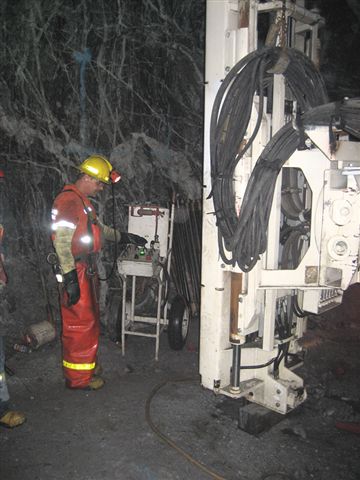Here is a genuine success story: ROCA MINES of Vancouver put a profitable molybdenum mine in British Columbia into production in less than two years.
The MAX project, 60 km southeast of Revelstoke, was just a bit of blue sky thinking when Roca acquired it in 2004. Now it is a high-grade, low-cost producer and one of the world's few primary moly mines.
And profitable it is. "The historical moly price has been $5/lb, and we are producing for $5/lb, that's our projected cash cost for our Phase 1 plan," said Roca president and CEO Scott Broughton. "When the moly price is $30/lb, we make a lot of money."
Even if Roca's cash costs go up to $7/lb next year, and they may according to Broughton, the company will still make lots of cash. (We'll take a look at what Roca plans to do with all that cash in next Monday's Alert.)
The MAX deposit was originally discovered in the 1960s by a local prospector, Alan Marlow. The deposit is porphyry in nature but being a primary molybdenum deposit is not associated with copper mineralization often found in porphyries. Molybdenite is the only mineral of economic importance found in the MAX deposit. The deposit has been drilled from surface to a depth of 1,000 metres. A detailed description of the MAX mineralization is available in the technical report posted at www.RocaMines.com.
From 1978-82 a joint venture of Newmont and Esso Minerals spent $15 million at the property, driving an adit and drilling over 37,000 metres of core. When the moly price fell in the early 1980s, work stalled. By the late 1990s the central claims had lapsed and were restaked by local prospectors.
Roca Mines was a one-property junior when it went public in 2002. The decision to pick up the central MAX claims in 2004 turned out to be the right one at the right time. Newmont's remaining claims, rather like the doughnut around the hole, were purchased in a deal that included all of Newmont's technical information and drilling results.
"We had a mine-ready project," said investor relations specialist Doug Fosbrooke. "All we had to do was decide on the size and planning details."
The MAX mine operates on a 'small mine permit' it received from the B.C. government in November 2005. Such permits were created for coal companies so that they could get a property into production at a reduced rate and begin generating cash flow. For metal mines, 'small mine' means up to 75,000 tonnes of ore annually. The environmental, consultation and review requirements are the same as for large mines.
Reserves extend from surface to 1,000 metres, and the deposit remains open at depth. Using a 0.10% MoS2 cutoff, the measured and indicated material totals 42.94 million tonnes grading 0.20% MoS2, or 113.49 million lb of contained molybdenum. This estimate includes 280,000 tonnes of high-grade at 1.95% MoS2, which is the target of mining now. Plus the property has inferred resources of 8.90 million tonnes grading 0.16% MoS2.
And that's not all. There are also untested tungsten skarn zones, both at the top of the mountain and underground not far from the end of the adit.
Roca is using simple longhole open stoping methods, and the ore is moved efficiently by rail to the surface along the adit. A second adit is one-third complete. When it is finished, an expanded mine ventilation system will allow for a larger equipment fleet and higher production rates.
Roca bought a used 1,000-t/d concentrator from ASARCO's closed Van Stone lead-zinc mine in Washington. The mill equipment and building, spare parts and plans cost only US$325,000. The structure was bolted, not welded, together, so it was easily disassembled to make 55 trailer loads that were trucked 380 km and reassembled.
The mill included a 2,500-t/d crushing plant, two 500-t/d ball mills, flotation cells, and a dewatering circuit. Roca found a throughput bottleneck at the ball mills, so it has bought a third ball mill, this one with a capacity of roughly 700 t/d, to allow for expansion. The flotation cells (of varying sizes) have been refurbished, and Roca will also be testing an OUTOTEC flash cell. The dewatering circuit includes two thickeners and filter presses.
So there they have it. Roca investors put $30 million in the pot and the management team created a money-maker in record time. All that remains is to expand the throughput and reap the rewards.

Comments